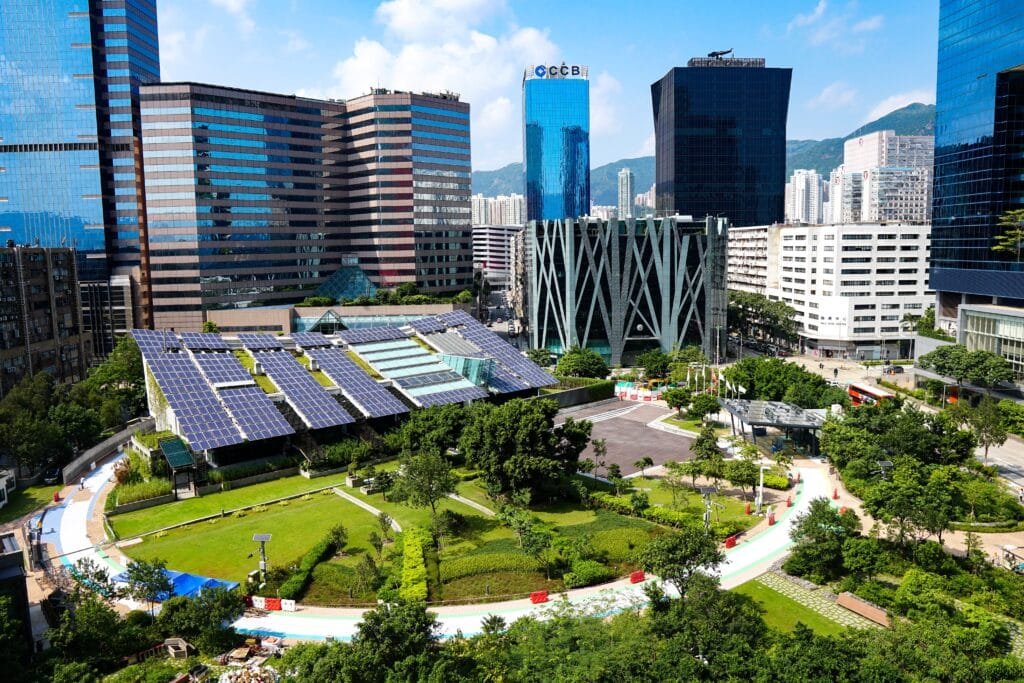By 2050, nearly 70% of the global population will live in cities, making urban areas critical battlegrounds for sustainability. Cities consume over 75% of the world’s natural resources and produce more than 60% of greenhouse gas emissions, despite covering only 3% of the Earth’s land area. Sustainable urban development, which integrates environmental, social, and economic considerations, offers a pathway to mitigate these challenges. This article explores how green infrastructure, smart technologies, affordable housing, sustainable transportation, and community involvement can create greener, more livable cities.
Green Infrastructure
Green infrastructure refers to natural and semi-natural systems that provide environmental, economic, and social benefits.
- Examples:
- Green roofs: Toronto’s Green Roof Bylaw has resulted in over 500 green roofs, reducing urban heat islands and improving air quality.
- Urban forests: New York City’s Million Trees NYC program planted over one million trees, reducing air pollution and cooling urban temperatures.
- Permeable pavements: Chicago’s Green Alley Program has implemented permeable pavements to reduce stormwater runoff and prevent flooding.
Such initiatives not only enhance biodiversity but also improve residents’ quality of life by creating greener, healthier urban spaces.
Smart Cities
Smart cities leverage technology to optimize resource use and improve sustainability.
- Technological Solutions:
- Singapore’s Smart Nation initiative uses IoT sensors to monitor energy use, optimize waste collection, and manage water resources efficiently.
- Barcelona’s smart street lighting system reduces energy consumption by 30% by adjusting brightness based on pedestrian and vehicular activity.
- Copenhagen’s smart traffic system reduces congestion and CO2 emissions by prioritizing buses and bicycles at traffic signals.
These innovations demonstrate how integrating technology into urban planning can make cities more efficient and sustainable.
Affordable and Sustainable Housing
Housing must be both eco-friendly and accessible to ensure inclusivity in sustainable urban development.
- Examples:
- The BedZED project in London, a zero-energy housing development, combines renewable energy sources, efficient insulation, and shared community spaces to reduce environmental impact.
- In India, the government’s Pradhan Mantri Awas Yojana promotes affordable housing with energy-efficient designs to lower electricity consumption.
Sustainable housing initiatives not only reduce carbon footprints but also address social equity by providing affordable living options.
Sustainable Transportation
Transportation contributes significantly to urban carbon emissions, making sustainable mobility essential.
- Examples:
- Bogotá’s TransMilenio, a Bus Rapid Transit (BRT) system, reduces 1.7 million tons of CO2 annually by offering efficient public transit.
- Amsterdam’s cycling infrastructure supports over 800,000 cyclists daily, reducing traffic congestion and air pollution.
- Oslo aims to become the first city with a car-free city center, promoting walking, cycling, and public transit.
Investing in public transit, cycling infrastructure, and electric vehicles can drastically cut urban emissions and improve air quality.
Community Involvement
Citizen participation is a cornerstone of sustainable urban development.
- Examples:
- Detroit’s community gardens have revitalized abandoned spaces, providing fresh produce and strengthening community bonds.
- Porto Alegre’s participatory budgeting program empowers residents to decide how a portion of the city’s budget is spent, ensuring alignment with community priorities.
Engaging citizens in urban planning fosters a sense of ownership and ensures that development meets local needs.
Challenges and Solutions
While the benefits of sustainable urban development are clear, challenges remain:
- Challenges:
- High costs of implementing green infrastructure and smart technologies.
- Resistance to change from policymakers and citizens.
- Balancing economic growth with environmental goals.
- Solutions:
- Public-private partnerships, such as the Loop initiative for reusable packaging, can share costs and drive innovation.
- Government incentives, like tax breaks for green buildings, encourage sustainable practices.
- Education campaigns increase public awareness and support for sustainable initiatives.
Sustainable urban development is essential for addressing the environmental, social, and economic challenges posed by rapid urbanization. By investing in green infrastructure, leveraging smart technologies, promoting affordable housing, enhancing sustainable transportation, and involving communities, cities can transition to greener, more livable spaces. As exemplified by initiatives in cities like Singapore, Bogotá, and Amsterdam, the path to sustainability is achievable with collective effort. Building sustainable cities today ensures a healthier, more resilient future for generations to come.

